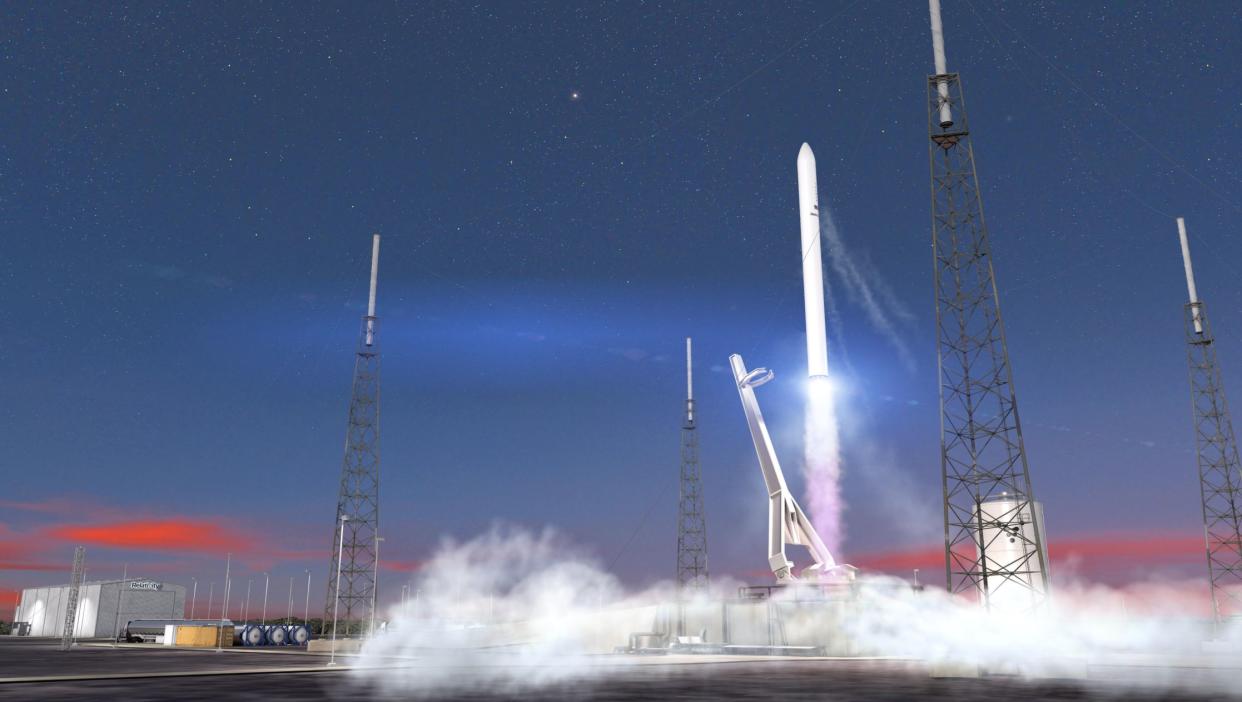Relativity Space stacks 3D-printed rocket on launch pad ahead of 1st flight

A 3D-printed rocket is once again fully assembled at the launch pad ahead of its debut mission.
Relativity Space put together the stages of its expendable Terran 1 rocket, a two-stage small-lift vehicle, on the launch pad for "final ground tests" ahead of its debut flight, CEO Tim Ellis shared Monday (Feb. 6) on Twitter.
"We are vertical again!!" tweeted Ellis about Terran 1, which is rumored to be launching as soon as this month from Cape Canaveral Space Force Station in Florida providing these tests go to plan. (Relativity Space has not disclosed an official launch date yet.)
Related: Relativity Space to launch satellite 'tugs' on 3D-printed rocket
Getting ready for final ground tests, launch feeling real. At the doorstep. Photos from our technician team hard at work up high on the rocket. We are vertical again!! @relativityspace pic.twitter.com/0ANo0FywScFebruary 6, 2023
The debut Relativity mission is called GLHF (Good Luck, Have Fun) and will be a key launch test of the 110-foot (33-meter) Terran 1 before it flies customer payloads.
The company's rocket is 85 percent 3D-printed by mass and is said to be "the largest 3D printed object to exist and to attempt orbital flight" by the company. Eventually, they plan to create Terran 1 rockets that are 95 percent 3D-printed.
The nine Aeon engines on the first stage of the rocket, along with the Aeon Vac engine on the second, are also all 3D-printed. They will use liquid oxygen as well as liquid natural gas, which is a rare combination in the industry. In fact, a natural gas-fueled rocket has not yet reached orbit successfully.
Should the natural gas fuel prove itself in low Earth orbit, Relativity hopes to eventually port the technology to the Red Planet because the propulsion is reusable and "the easiest to eventually transition to methane on Mars," company officials state. (Relativity aims to reach the Red Planet eventually.)
Co-founders Tim Ellis and Jordan Noone founded Relativity in 2015 after working at Blue Origin and SpaceX, respectively. Terran 1 can deliver a maximum payload of up to 2,756 pounds (1,250 kilograms) to low-Earth orbit, according to Relativity, and that's not all the company is working on.
In 2021, Relativity unveiled the much more powerful and better-performing Terran R, which will be 216 feet (66 m) tall by 16 feet (4.9 m) wide. It will also boost nearly 25 times the payload mass of Terran 1 into space, hefting 44,100 lbs. (20,000 kg) to low Earth orbit, representatives said at the time. Terran R will also be fully reusable and may launch as soon as 2024.
Terran R's forecasted payload capacity will bring it close to a big competitor: SpaceX's Falcon 9, which has been lifting satellite clusters and large payloads into orbit and beyond for nearly a decade. Falcon 9 seeks its reusability through landing the first stage on land or on a nearby drone ship.
Elizabeth Howell is the co-author of "Why Am I Taller?" (ECW Press, 2022; with Canadian astronaut Dave Williams), a book about space medicine. Follow her on Twitter @howellspace. Follow us on Twitter @Spacedotcom or Facebook.

